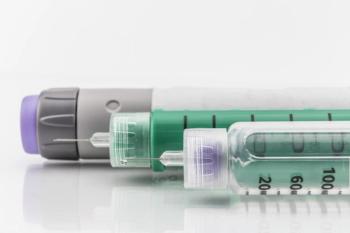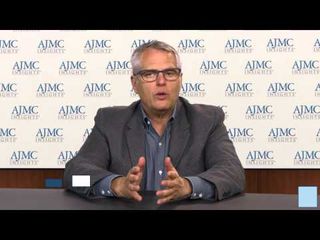
Health Care Cost
Latest News
Latest Videos

CME Content
More News

Wound care is costly, costing at least $28.1 billion annually for the Medicare population alone. Treating patients with wounds can be complex as they often have multiple comorbidities that impede wound healing.

Generally, life sciences companies are aligned around the benefit of using value-based insurance design (VBID) to address health care costs and ensure that medications get to the patients who need them.

Pharmacists from the Cleveland Clinic discuss the impact of payer dispensing requirements, known as white bagging and brown bagging, on oncology practices and on patients.

The study examined the cost to Medicare when patients with end-stage renal disease switched from their employer-based health insurance to Medicare between 2007 and 2017 before the end of the 30-month coordination period.

A panel of experts provided consumer insights into value-based insurance design (VBID) and how the COVID-19 pandemic may have changed consumer behaviors in a way that VBID may be able to address as the country emerges from the pandemic.

A desire to remove barriers to high-value care and provide services that would improve health and quality of life drove early adopters of value-based insurance design (VBID).

After Medicare Part D plans stopped covering a chronic obstructive pulmonary disease (COPD) therapy, patients had gaps in care and increased out-of-pocket costs, according to a recent study.

During a session presented at the America’s Health Insurance Plans (AHIP) National Health Policy Conference, Michael Chernew, PhD, the director of Healthcare Markets and Regulation Lab at Harvard Medical School, and Mark McClellan, MD, PhD, founding director at Duke Margolis Center for Health Policy, discussed the potential for Medicare innovation and reforms in 2021 and beyond.

The $1.9 trillion spending package aimed at providing COVID-19 relief for those with low and middle incomes also represents the biggest investment in the exchange marketplaces created by the Affordable Care Act (ACA) since the landmark law was passed 11 years ago.

Investigators sought to better understand increasing price trends, including those seen among disease-modifying drugs to treat multiple sclerosis (MS) and other neurological diseases.

Direct inpatient and outpatient costs are significantly higher for patients with untreated spinal muscular atrophy (SMA) compared with matched controls.

Most orphan drug spending does not actually go to patients with rare diseases, a new study shows.

Hypertension, anemia, and infection were the most common adverse events associated with mantle cell lymphoma (MCL), while hepatotoxicity, stroke, and renal failure were the costliest per patient.

Donald M. Berwick, MD, MPP, the former CMS administrator who is president emeritus and senior fellow at the Institute for Healthcare Improvement, discusses cost variation in cancer care found through the digital classification system the COTA Nodal Address.

In addition to coronavirus disease 2019, several other factors will play a major role in health care policy reform for federal and state-level health officials this year, including the transition to value-based care and containment of high health care costs.

Experts outlined the impact value-based insurance design (VBID) has had on the coronavirus disease 2019 (COVID-19) pandemic response and future potential applications of the model.

Patients’ socioeconomic status is a significant factor in predicting survival rates for multiple myeloma, according to a new study.

Individuals with serious mental illness have a greater risk of acquiring HIV compared with the general population and could therefore benefit from preexposure prophylaxis (PrEP) services in the community.

The Biden administration will reopen the health exchanges created by the Affordable Care Act (ACA); direct HHS and other agencies to reexamine other health policies, including Medicaid work requirements; and reverse the so-called global gag rule while affirming support for reproductive health.

A 13.9% increase in diagnosed cases of HIV was seen following expansion of Medicaid coverage under the Affordable Care Act.

The American College of Rheumatology (ACR) announced a number of policy priorities that it is encouraging the new Congress and administration to focus on during the year.

President Joe Biden reportedly will take executive action to reopen federal marketplaces selling Affordable Care Act (ACA) health plans; Moderna investigating booster shot designed to be more effective against emerging variants of coronavirus disease 2019 (COVID-19); Brazil coronavirus variant is found in Minnesota.

New research underscores the substantial economic burden associated with early discontinuation of guideline-recommended hypomethylating agent (HMA) therapy among patients with refractory anemia with excess blasts, a diagnosis that substantially overlaps with higher-risk myelodysplastic syndrome (MDS).

Based on US health insurance consumer behavior reported in the eHealth Insights: 2020 Retrospective report, notable trends of the past year to watch for in 2021 include the popularity of $0 premium Medicare Advantage plans, the rise of telemedicine, and potential hesitancy against taking a vaccine for coronavirus disease 2019.

The statement is aimed at drug companies, policymakers, pharmacy benefit managers, employers, and others, and calls to attention soaring insulin costs, which were the subject of several Congressional hearings in 2019.
























































